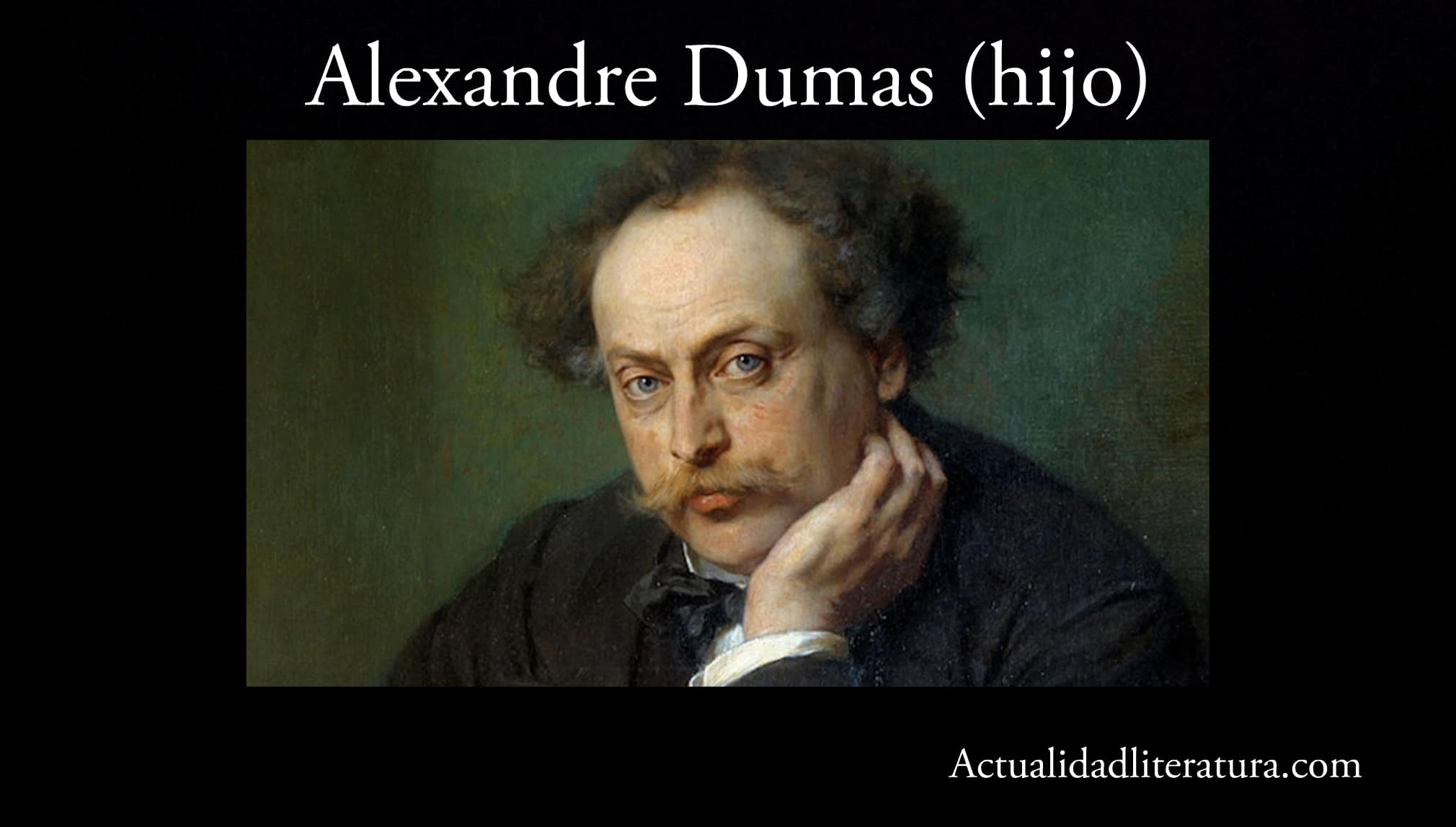
Alexandre Dumas (son).
The Lady of the Camellias It is the best known piece in Alexandre Dumas Jr.'s catalog. It is a rose novel in all the extension of the term, a portrait of an impossible love condemned to a tragic end. From the outset, the author himself is in charge of clarifying the fate of the protagonist - her lover and her martyr - slowly and painfully devoured to death from tuberculosis.
Likewise, this work piece is considered as the great hinge between realism and romanticismo literary. Well, the cruelty in some of its passages when the story delves into the misfortunes of its characters, dispenses with all sugary language. Therefore, it is a precise, concrete work, ruthless with its protagonists and with the society it portrays: XNUMXth century France.
The author
From his name, Alexandre Dumas Jr., he always had a hard time being “his father's son”. He was the natural son of the celebrated author of The Three Musketeers with a modest Parisian seamstress. To make matters worse, he was belatedly recognized by his father, who in the end and using the laws in force, ended up separating from his mother.
Therefore, the relationship between father and son went through multiple moments of tension. In fact, the author of The Lady of the Camellias He stated: "As a child, he had a son (his father) whom he had to watch over and educate." Because the latter was a character with a turbulent life, full of multiple love affairs, typical of the prestige and star status he enjoyed.
Dumas, the moralist
The uncomfortable reality that the "second" of the Alexandre had to face is noticeable in his work. Although he followed the artistic path of his father, he would do so with a completely different narrative style, especially in the selection of the topics to be discussed. Compared, the son's stories unquestionably move away from parental grandiloquence to explore more mundane and everyday issues.
That is to say, for Dumas junior there are no great heroes, but there are many who are defeated. Its "flesh and blood" protagonists live in "the real world". Accordingly, they suffer or enjoy according to their social status or their place in the food chain. Additionally, a constant trait: its characters (almost without exceptions) are full of prejudices that do not allow them to transcend.
El hijo natural
One of the most celebrated works in all of Dumas Jr.'s oeuvre is The natural child. Based on your own case, The author maintains that every parent capable of engendering a child out of wedlock, is obliged to give the child's surname and compensate the mother by marrying her.
The stigma of being a "bastard" haunted the writer during his youth. Despite the excellent education provided by his father, he suffered firsthand the harassment that is currently known as “bullying”. Apart from his “illegitimate” condition, he was also singled out because of the genetic inheritance of his paternal grandfather (he was not white, but a mulatto).
An author with his own name
Despite all the stigmata, Alexandre Dumas Jr. managed to build his own path. Which carries enormous merit, essentially considering his namesake with his father. It's more, His literary work is recognized from his time as fundamental within the letters of the Gallic nation. So much so that he was conferred the honor of being part of the French Academy.
Of course, had its detractors. Victor Hugo, who first had to face the fame of his father, was one of the most active. Likewise, the Catholic Church - whose power was still important at that time in France - included in 1963 The Lady of the Camellias and all his romance novels in the Index of Prohibited Books.
The Lady of the Camellias: a real life story

The Lady of the Camellias.
You can buy the book here: The Lady of the Camellias
The life of Dumas son was not exempt of love surprises (not as many as those of the father). Even if, the author himself, once his "immaturity" stage had passed, came to express shame about various events of his youth. One of those chapters was portrayed in The Lady of the Camellias.
This novel, originally published in 1848, tells the story of a young aristocrat —In fiction he has no fortune — that he falls in love with a courtesan. To such an extent that he plans to go live with her, despite the opposition of his father and the prejudices of society.
Appearances above all
Margaret Gautier, the protagonist, leads a lifestyle that cannot be paid. But which he does not want to give up either. This leads her to accumulate innumerable debts ... little by little, along with her illness, they will consume her until she is dry.
Margherita falls in love with Armando Duval, a young lawyer obsessed with the courtesan, who goes out of his way to stay with her. And it succeeds. However, pressure from his father (secretly blackmailing his son's beloved) ends up being imposed.
Prostitution, jealousy, revenge
Dumas son openly portrays the double standards of Parisian society. Where, if an earl or a duke keeps a courtesan, there are no problems. On the other hand, if this lady decides to give up everything to run away with the man she loves, they won't let her. The reverse is also true: if an aristocrat decides to support a prostitute, that is fine.
On the other hand, if the nobleman falls in love and decides to establish himself in marriage with her, he is classified as crazy. Then, the author takes this cocktail of prejudices and reviews them in combination with jealousy and the desire for revenge. In the end, they are feelings that lead to greater misfortunes.
Straightforward and rude, no frills
The Lady of the Camellias it is a work of hard and direct lines. In the text, literary figures (metaphors, for example) are practically non-existent. Likewise, there are no sumptuous or detailed descriptions intended to delight readers.

Phrase of Alexandre Dumas (son).
This simplicity of the language leads to a narrative style where the story passes by blocks, like little comic book slides. Additionally, the absence of ornaments leads to explain without delay how the protagonists ended up imprisoned in misfortunes.
A momentous work
The validity of this book has been maintained until the present, it has even been adapted countless times to the theater and the cinema. One of the most famous representations is the one performed by the Italian Giuseppe Verdi. Who, from The Lady of the Camellias, composed The Traviata.